No man is an island; the same goes for your business. They are other companies, 3rd parties, and people that you will need to achieve your value proposition and your key activities.
It’s impossible for you to internally source everything you need for your business.
So a crucial question to ask here is ‘who can I rely on if my business cannot achieve the value proposition alone?’ An example of this is if you run a local grocery store, you may need a local baker to supply fresh bread to your store.
Key partnerships can either be in the form of an open relationship where both partners retain their independence and are free to form more partnerships. Or it can be an exclusive contract that limits the two companies to only that one relationship.
So in this segment, it’s essential to list the activities, resources, and channels you need to outsource to deliver your value proposition to your customer segments. This will give you an indication of the partners you’ll need to make your business model work.
Let’s look at Spotify. Spotify’s key activity and value proposition are giving users access to music. However, the company doesn’t produce its own music, so key partners for Spotify would be record labels and artists who own the rights to the music.
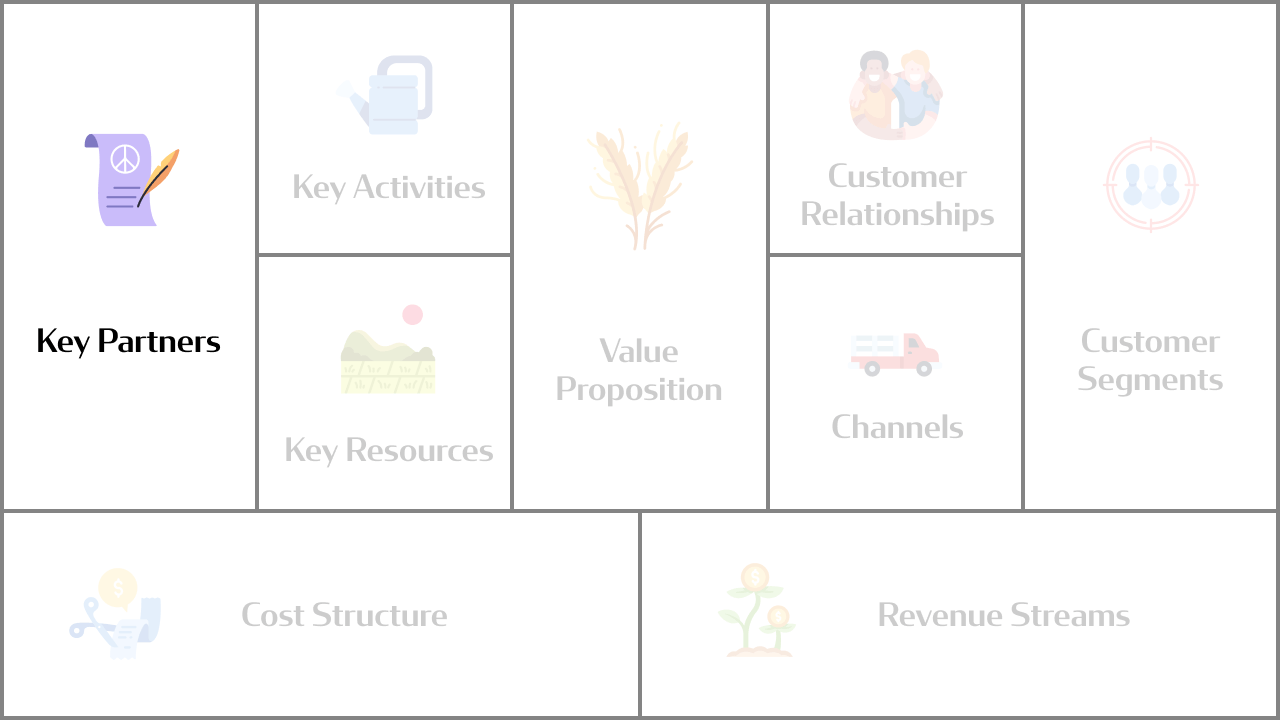
Why are Key Partners Important?
Healthy partnerships are crucial in making a business successful. Still, they can be tricky and involve a lot of negotiation and an element of trust. There are several reasons why a company might opt for a partnership. It’s important to mention that your business can form several partnerships for various reasons. Still, not all will be key to your business.
Partnerships are essential for the following reasons:
- Optimization and economy of scale
Partnerships enable your business to optimize its resource utilization. Some organizations go into alliances to increase their bottom line. In contrast, others are motivated by the cost-cutting benefits of partnering.
It’s unrealistic to think that your business will have all the resources in place to conduct all your key activities in-house. Partnerships will give you the ability to share infrastructures or outsource some activities to more cost-effective options.
Tesla, for instance, signed a production contract in 2005 with Lotus to produce complete car shells. This partnership was crucial for developing Tesla’s first car, the Roadster. The company had tried and failed to secure suppliers of materials such as airbags, door handles and latches, seatbelts, and other components that made up the shell of a sports car.
Tesla didn’t have enough money, so securing these suppliers was a challenge. Additionally, most suppliers saw their idea as too risky and likely to fail, so they were not keen on partnering with Tesla. Thankfully, Lotus, a UK-based car manufacturer, had a good relationship with some suppliers and managed to secure these essential components on behalf of Tesla Motors.
Just keep in mind that partnerships can change throughout your business’ lifecycle. The types of partnerships that may be key during your first year may not be the ones you’ll need once your business is established.
- Reduction of risk and uncertainty
A good partnership may help you reduce the inherent risk of doing your own business. For example, you can guarantee the supply of some critical resources to your business rather than depending on suppliers who aren’t key partners. Usually, the latter suppliers may not give precedence to your business because there is no exclusive partnership agreement.
Some competitors may form strategic partnerships to share the risk of bringing something new into the market while still competing in various aspects of the industry. A great example of this is the development of blu-ray technology. This was a collaboration by some of the world’s biggest consumer electronics and computer technology firms, including Panasonic, Pioneer, Philips, Thomson, LG Electronics, and Hitachi Sharp, Samsung Electronics, and Sony.
Developing this technology was costly, and these competitors had to work together to make blu-ray technology more mainstream.
- Acquisition of activities and new resources
Sometimes having a key partner will help you attain new resources or conduct key activities that are hard to source in-house. This might be due to the resources or activity requiring a heavy investment of time, money, or both. Negotiating a partnership with a company that already possesses the things you lack can come in handy.
For example, in 1984, Toyota and General Motors entered into a joint venture called the New United Motor Manufacturing, Inc. The purpose of the partnership was to re-launch the General Motor plant in Fremont, California, and strengthen Toyota’s position. Under the joint venture, the plant would manufacture cars for both brands.
The partnership also benefited General Motors, struggling to sell high-quality and fuel-efficient small cars. They could now access the Toyota Production System and penetrate the small car market.
Additionally, the factory would give Toyota a manufacturing base in North America, thereby avoiding the tariffs on imported vehicles. Moreover, General Motors would prove valuable in navigating the American labor environment, particularly relations with the United Auto Workers union.
Types of Partnerships
Partnerships come in different forms. They can be strategic alliances, joint ventures, or buyer-seller. Your partnership could have to do with anything necessary for your business to run, such as capital, manufacturing, service, or supplies.
- Strategic alliances: These types of partnerships are between non-competitors. For example, Uber’s partnership with Spotify allows Uber riders to easily stream their Spotify playlists whenever they take a ride. This makes the Uber experience feel more personalized and encourages Uber riders to subscribe to Spotify Premium to get more control.
- Co-opetition: This type of partnership helps to spread the risk between both parties. It may also assist when both partners are trying to introduce something new. For instance, Amazon (Kindle) and Apple (iPad) established an agreement in 2007 to allow the distribution of Amazon e-books through an iPad – Kindle App.
- Joint-Ventures: Joint Ventures help both partners who might have a mutual interest in developing new business. Think back to our Toyota and General Motors example.
- Buyer-Supplier Relationships: These are the most popular type of partnerships and ensure that your business has a reliable source of supplies. This means they have a reliable buyer for their product for the supplier.
How to Create Good Key Partnerships
There are several factors you should keep in mind when forming partnerships:
- Right Partnership Agreements: Regardless of who you partner with, all relevant parties must have clear partnership agreements drafted along with legal counsel.
- Defining Expectations: To avoid future conflict, it’s best to establish expectations from the onset.
- Impact on your customer segment: When forming a partnership, it is crucial to consider your value proposition and key resources. Partners may fill up a gap for every BMC segment, with the most important being possible access to new clients. For example, Netflix partnered with Apple by launching an app on Apple’s iPad. This gave the access to new customers and also helped with the user experience.
- Win-Win situation: Healthy and sustainable partnerships need to have visible gains on both ends.
Lastly, some partnerships may seem beneficial on paper but fail to get off the ground practically. Additionally, changes in the business model may also make some business partnerships irrelevant.
When analyzing the various key partnerships that your business requires, it is imperative to evaluate the nature of the alliance based on the following key questions;
- Which partnerships are critical to our business?
- Who can you trust to help you achieve the value proposition?
- What can’t you offer that a partner can?
- What type of partnerships would suit our needs?
- Who has easy access to your customer segment?
- Who could decrease your effort in building customer relationships?
- What key resources are in hands of other companies that are not your direct competition?
- What partnerships could lower your in-house costs?
- What activities are not crucial to your business model and could be outsourced to third parties?
- Are there already existing channels that you could use in exchange of your resources or effort?
It all boils down to identifying what is in your capabilities and what isn’t. There’s nothing wrong with outsourcing some of your channels, activities, or resources, as long as you don’t put at too much risk your business model if the partnership breaks.



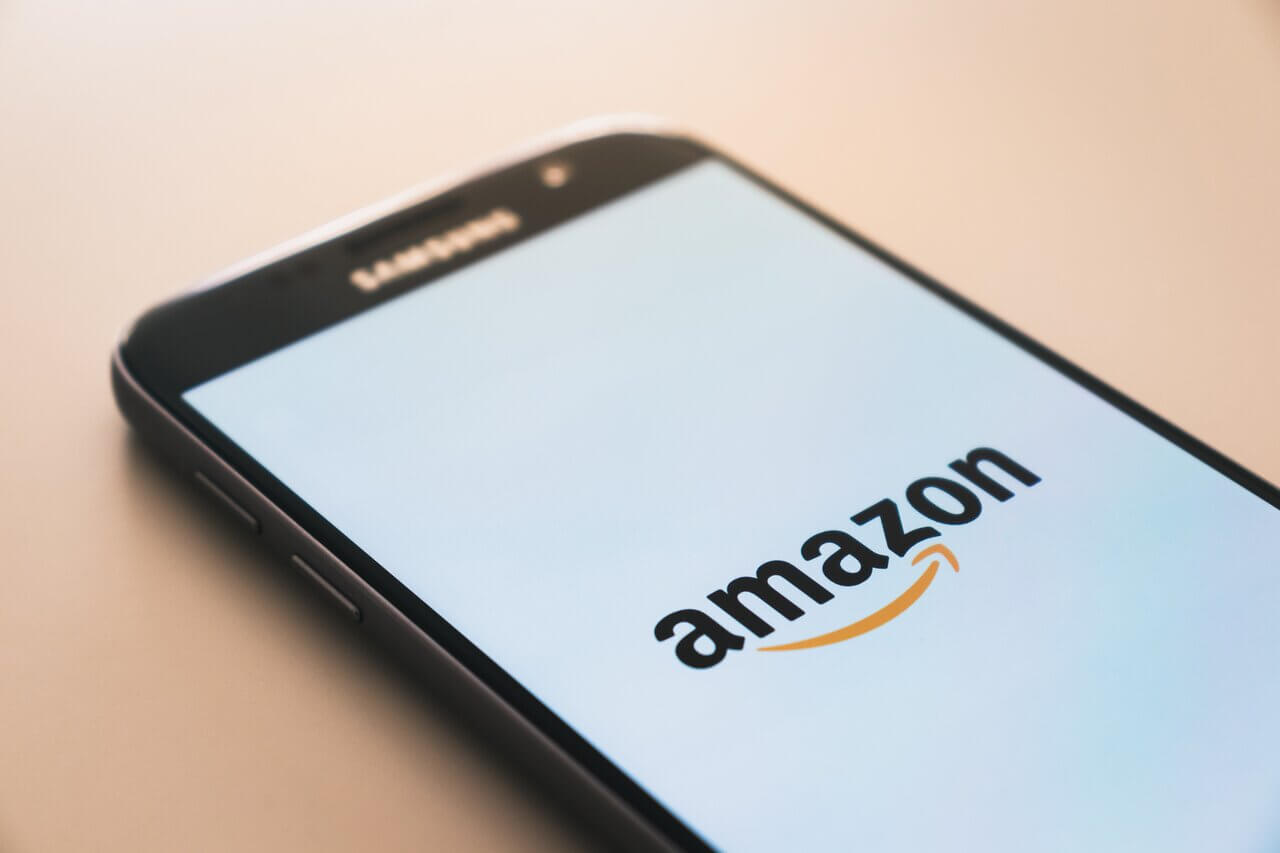

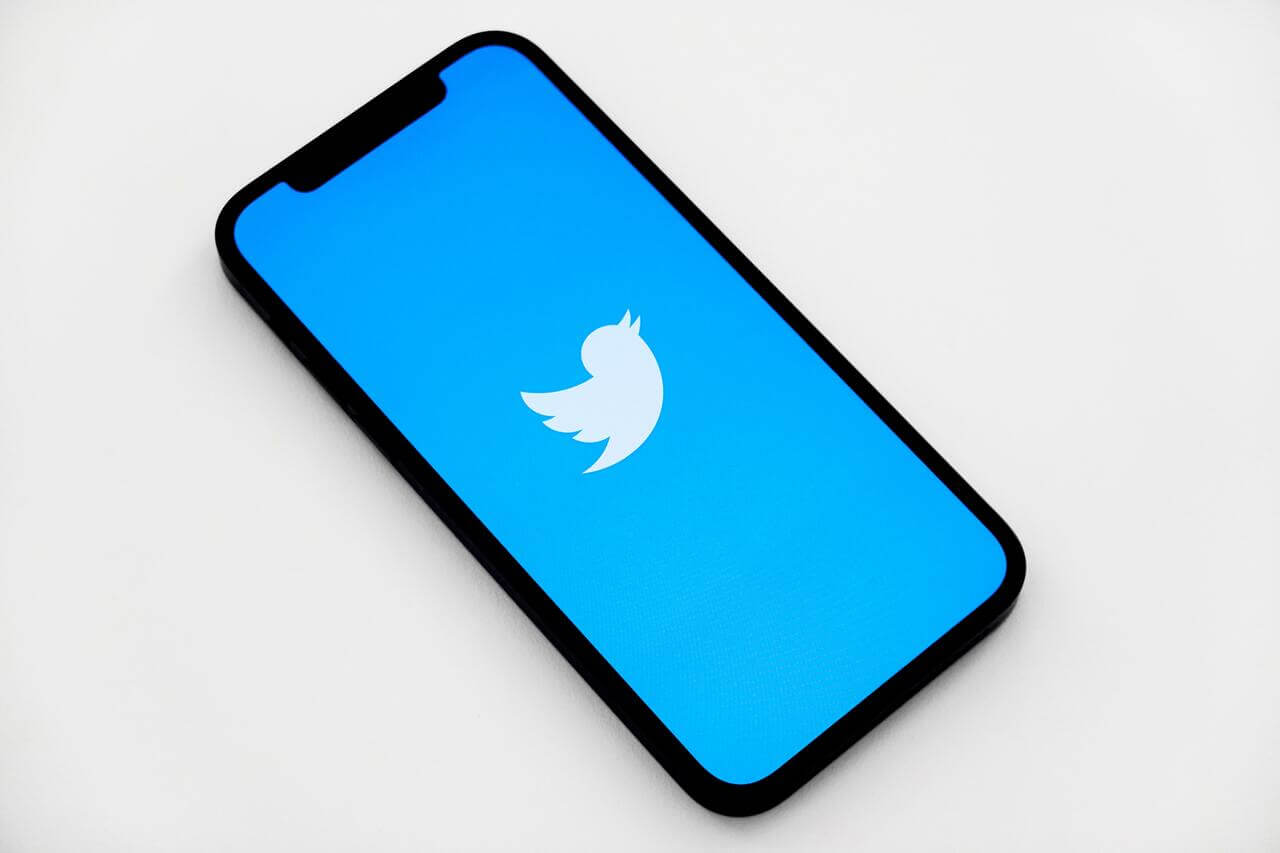
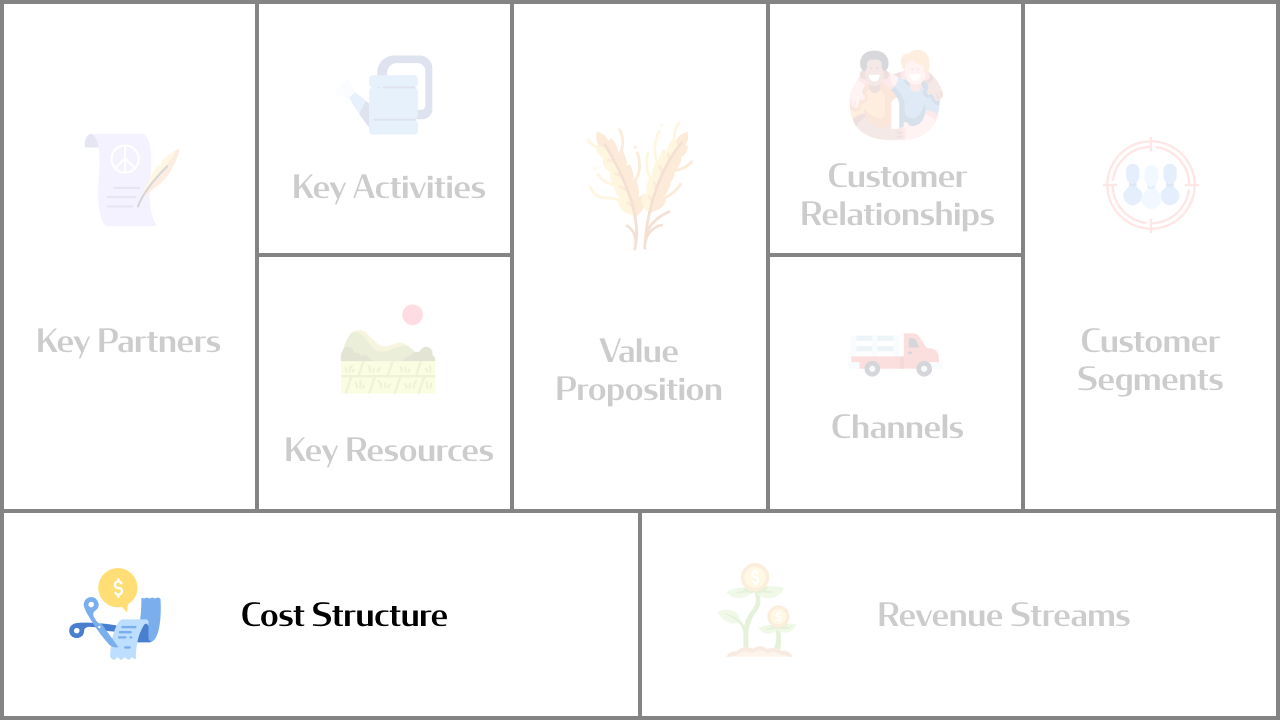
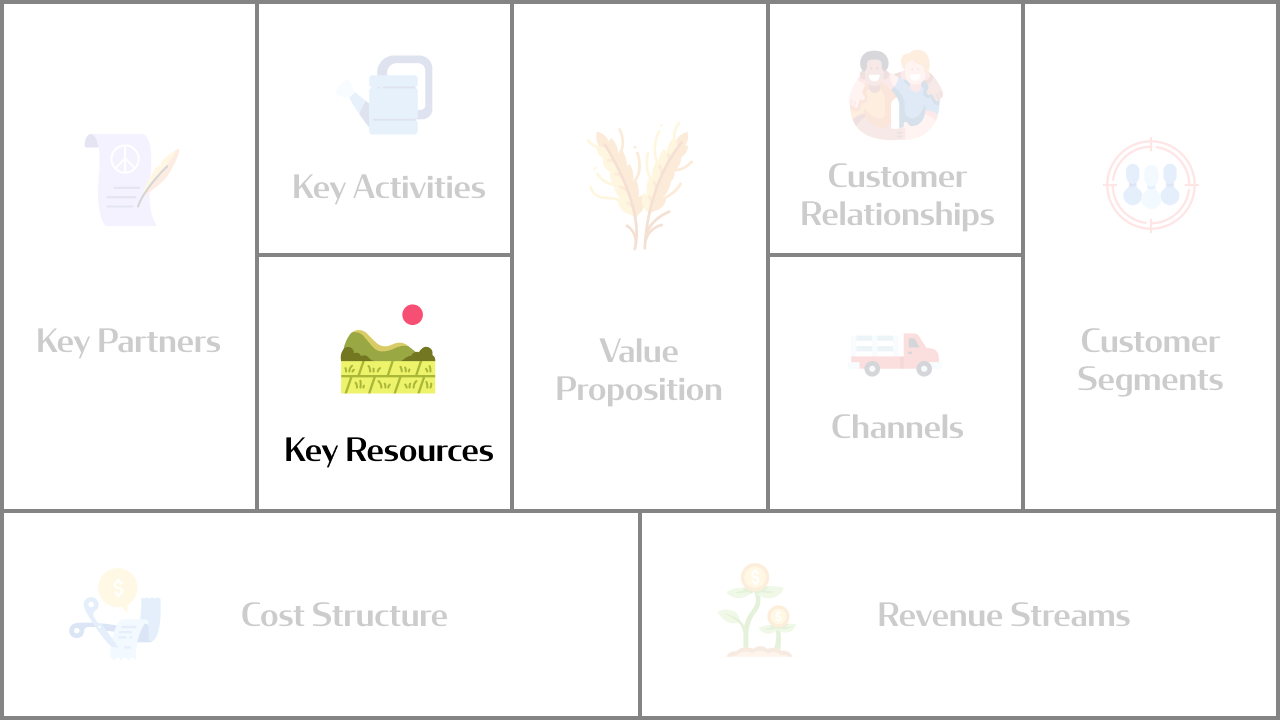
2 Responses
Greetings! Very helpful advice in this particular post! It is the little changes that make the most significant changes. Thanks for sharing!
Hello there! I could have sworn I’ve been to this site before but after browsing through a few of the posts I realized it’s new to me. Regardless, I’m definitely pleased I discovered it and I’ll be book-marking it and checking back often!